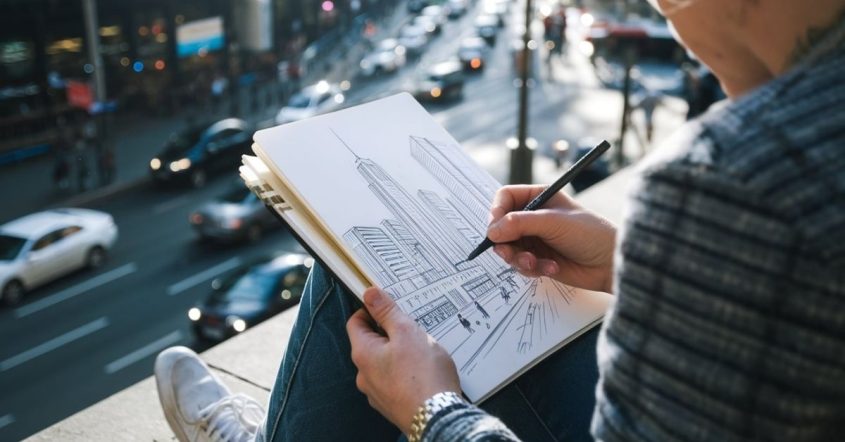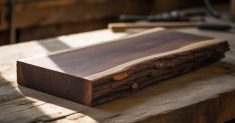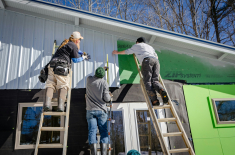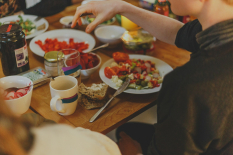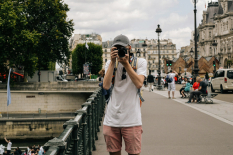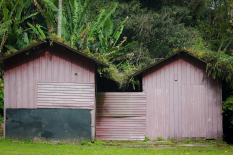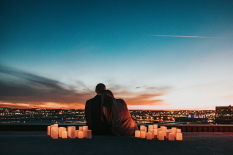Urban sketching is a type of drawing done on location, capturing real-life scenes from cities, towns, and streets. Unlike studio art, where artists create work in a controlled environment, urban sketching focuses on what is happening at the moment. It can include buildings, people, vehicles, markets, or daily urban life.
Urban sketching has grown into a global movement in recent years, with artists and hobbyists worldwide sharing their sketches online and in communities. This art form encourages quick, spontaneous drawing, allowing sketchers to document their surroundings in a personal and expressive way.
Unlike traditional studio art, which often involves detailed planning and long hours of work, urban sketching is about speed, observation, and storytelling. Sketchers aim to capture the energy and atmosphere of a place rather than creating a perfect, polished artwork. It is an accessible and enjoyable way for anyone to explore their creativity while observing the world around them.
The Purpose and Significance of Urban Sketching
Urban sketching is more than just drawing—it is a way to observe and connect with the world. It serves several important purposes:
Recording Everyday Life, Architecture, and Culture
Urban sketching helps artists document what they see in cities and towns. It captures daily activities, street scenes, historic buildings, and local traditions. Unlike photographs, sketches add a personal touch, reflecting how the artist experiences a place. Over time, these sketches become a visual diary, preserving memories and cultural details.
Improving Observation Skills
Urban sketching trains the eye to notice small but important details. Artists learn to observe how buildings are structured, how people move, and how light and shadows interact. It also helps with understanding proportions (the size of objects about each other) and perspective (how objects appear from different angles). With practice, sketchers develop a sharper eye for detail, which improves their overall artistic skills.
A Powerful Form of Storytelling
Every sketch tells a story. An urban sketch can capture the mood of a busy street, the quiet atmosphere of a café, or the festival’s energy. Through their sketches, artists can express emotions, highlight interesting moments, and share unique perspectives. Whether it’s a bustling marketplace or a peaceful park, urban sketches bring places to life in a way that words often cannot.
A Source of Relaxation and Mindfulness
Sketching is a meditative activity that encourages focus and relaxation. When artists concentrate on drawing, they enter a calm state of mind, reducing stress and anxiety. Urban sketching also promotes mindfulness by helping people stay present in the moment and appreciate their surroundings. Whether sketching alone or in a group, it is a fulfilling and enjoyable way to unwind while being creative.
Essential Tools for Urban Sketching
To start urban sketching, you don’t need expensive materials—just a few essential tools that suit your style and needs. Here are some basic supplies:
1. Sketchbooks: Choosing the Right Paper and Format
A sound sketchbook is one of the most essential tools for urban sketching. Different types of paper are better for different techniques:
- Smooth paper is excellent for fine lines and ink drawings.
- Textured paper is better for watercolors, as it absorbs paint well.
- Mixed-media paper works well for both ink and color.
Sketchbooks come in various sizes and formats. A small, portable sketchbook (A5 or A6 size) is easy to carry, while a larger sketchbook (A4 or more significant) gives more space for detailed drawings.
2. Drawing Tools: Pens, Pencils, and Colors
Artists use different drawing instruments depending on their style:
- Pencils: Great for rough sketches and shading.
- Fineliners: Perfect for clean, sharp lines.
- Markers and Brush Pens: Add bold lines and quick color.
- Watercolors: Give sketches a soft, vibrant look.
Most urban sketchers prefer waterproof pens and inks to add watercolor without smudging the lines.
3. Digital Sketching: A Modern Alternative
For those who prefer digital art, tablets, and styluses offer a great alternative to traditional sketching. Apps like Procreate, Adobe Fresco, and Sketchbook allow artists to create detailed sketches with various brushes and colors. Digital sketching also makes editing, undoing mistakes, and experimenting with different styles easy.
4. Portability: Choosing a Travel-Friendly Kit
Since urban sketching happens outdoors, carrying lightweight and compact tools is essential. Many artists prefer:
- A small sketchbook that fits in a bag or pocket.
- A travel watercolor set with a water brush.
- A pen or fine liner with waterproof ink.
- A foldable stool for comfortable outdoor sketching.
A well-prepared urban sketching kit helps artists sketch anywhere—whether in a park, café, or busy street—making capturing moments on the go easy.
Fundamental Techniques for Beginners
Urban sketching requires practice, but beginners can develop their skills by mastering key techniques. These techniques help artists create accurate, expressive, and dynamic sketches of city life.
Breaking Down Complex Subjects into Basic Shapes
One of the best ways to start urban sketching is by simplifying objects into basic geometric shapes. Buildings, for example, can be reduced to cubes and rectangles, while cars can be formed using box-like shapes. Even human figures can be broken down into circles and ovals for the head and body. This method helps artists build their sketches with correct proportions and structure, making adding details easier.
Capturing Perspective and Proportion
Perspective is essential for drawing depth and creating a sense of space. In urban sketching, it is crucial to understand how objects appear smaller as they move further away. One-point perspective is often used for drawing roads or alleyways that lead toward a single vanishing point. Two-point perspective helps when sketching buildings viewed from an angle, ensuring lines converge realistically. Maintaining correct proportions is equally essential, ensuring objects like doors, windows, and vehicles appear naturally sized concerning their surroundings.
Using Light and Shadow for Depth
Shading brings life and depth to urban sketches. Observing how light falls on buildings, people, and objects allows artists to contrast light and shadow. Different shading techniques, such as hatching (closely spaced lines), cross-hatching (intersecting lines for darker areas), and blending (smoothing out pencil or watercolor shading), help add realism. Paying attention to shadows cast by trees, lamp posts, or people enhances the atmosphere of the sketch and makes it more visually engaging.
Expressing Movement with Gesture Drawing
Urban sketching often involves drawing people in motion—walking, talking, cycling, or interacting with their environment. Gesture drawing is a technique that helps capture these movements quickly and expressively. Instead of focusing on tiny details, artists sketch a subject’s basic posture and action in just a few fluid strokes. This method is advantageous in crowded areas like markets, parks, or public transport, where people constantly move. It encourages a loose and dynamic drawing style.
Developing Speed Sketching Skills
Speed sketching is essential for urban artists who want to capture a scene before it changes quickly. The goal is not to create a perfect drawing but to record the essence of a moment in a short time. This technique is beneficial when sketching in busy locations where people, vehicles, or light conditions change rapidly. With practice, artists become more confident and efficient, improving their ability to observe and sketch in real-time.
Mastering these fundamental techniques allows beginners to improve their urban sketching skills, making their drawings more structured, expressive, and engaging. By combining basic shapes, perspective, shading, and speed, artists can bring the vibrancy of urban life to their sketches.
Popular Styles and Approaches in Urban Sketching
Urban sketching allows artists to explore different styles depending on their preferences and the story they want to tell. Some sketchers prefer quick, expressive strokes, while others focus on intricate details. Here are some popular approaches used in urban sketching.
Loose and Expressive Sketching
This style focuses on speed and spontaneity rather than perfect accuracy. Artists use quick, freehand strokes to capture the mood and energy of a scene rather than focusing on every detail. This approach is excellent for drawing busy streets, moving crowds, or lively markets, as it helps convey movement and atmosphere. Many sketchers use bold lines, minimal details, and splashes of color to make their work more dynamic.
Detailed and Architectural Sketching
Some urban sketchers prefer to focus on precision, capturing every intricate detail of buildings, streets, and landmarks. This style requires patience and careful observation, as it involves drawing fine details like windows, balconies, textures, and decorative elements. Artists often use rulers or perspective grids to ensure accuracy, making their sketches look realistic and well-structured. This approach is ideal for those who enjoy sketching historical buildings, cityscapes, and architectural masterpieces.
Mixed Media Exploration
Urban sketching doesn’t have to be limited to just pencils or ink. Many artists experiment with different materials to enhance their sketches. Combining ink with watercolors is a popular technique, as it allows for strong outlines and soft, blended colors. Some sketchers even use digital tools to add highlights, textures, or corrections after scanning their drawings. By exploring mixed media, artists can create unique and visually striking sketches that stand out.
Monochrome vs. Colorful Sketching
Artists can choose between sketching in black and white or adding vibrant colors. Monochrome sketches, often done with ink or graphite, rely on shading and line work to create depth and contrast. This approach is great for focusing on composition and textures. On the other hand, colorful sketches bring life to urban scenes by capturing the different hues of buildings, people, and nature. Some artists prefer using a limited color palette, while others go for bright and bold shades to make their sketches more eye-catching.
Each style offers a unique way to capture the essence of urban life. Whether an artist prefers expressive strokes, detailed accuracy, mixed media, or color experimentation, urban sketching allows endless possibilities for creativity and personal expression.
Best Locations for Urban Sketching
Choosing the right location is an integral part of urban sketching. Different places offer unique subjects, perspectives, and atmospheres, allowing artists to capture a wide range of urban life. Here are some of the best locations for urban sketching.
Architectural Landmarks
Famous buildings, bridges, and city skylines make great subjects for sketching. These locations often have interesting shapes, details, and historical significance. Whether it’s an old cathedral, a modern skyscraper, or a charming neighborhood with unique architecture, sketching landmarks helps artists practice perspective, structure, and intricate details.
Bustling Markets and Streets
Markets and busy streets are full of life, making them perfect for capturing people in motion, street vendors, and everyday interactions. These locations provide an excellent opportunity to practice gesture drawing, facial expressions, and body language. Sketching in these areas also allows artists to tell a visual story about the culture and lifestyle of a city.
Parks and Public Spaces
Parks, gardens, and plazas offer a mix of natural and urban elements. Artists can sketch trees, fountains, benches, and people relaxing or engaging in outdoor activities. These spaces are ideal for practicing composition, including natural organic shapes and structured elements like buildings and pathways.
Cafes and Public Transport
Indoor locations like cafés, restaurants, and trains provide a comfortable setting for urban sketching. These places allow artists to observe people in a relaxed environment, capturing different postures, interactions, and daily routines. Public transport, such as buses or subways, adds an interesting challenge, as subjects constantly move, requiring quick and expressive sketches.
Industrial and Abandoned Spaces
Factories, warehouses, and abandoned buildings offer a different kind of beauty. These locations often feature rough textures, broken structures, and unique lighting conditions. Artists who enjoy sketching decay and contrast can find inspiration in these places, capturing urban landscapes’ raw and gritty sides.
Each location provides a unique sketching experience, helping artists improve their observation and storytelling skills. Urban sketchers can develop their style by exploring different settings and discover new creative inspirations.
Role of Social Media and Urban Sketching Communities
Social media and online communities have played a significant role in the growth of urban sketching. They allow artists to share their work, learn from others, and connect with sketchers worldwide.
Sharing and Inspiration
Platforms like Instagram, Pinterest, and YouTube make it easy for urban sketchers to showcase their drawings and reach a larger audience. These platforms also serve as sources of inspiration, where artists can explore different styles, techniques and ideas from other sketchers. Watching tutorials and behind-the-scenes videos helps beginners improve their skills and learn new methods.
Joining Urban Sketching Groups
Many cities have local urban sketching groups that meet regularly to sketch together. These groups provide a great way to learn, exchange tips, and build confidence in sketching in public. There are also international communities, such as the Urban Sketchers movement, where artists worldwide share their work and experiences online.
Online Challenges and Collaborations
Many urban sketchers participate in global art challenges like Inktober or #urbansketchers, creating and sharing sketches based on daily themes. These challenges help artists stay motivated, experiment with new techniques, and connect with other sketchers. Collaborations with other artists allow sketchers to learn new approaches and grow as creatives.
Being part of an online or local sketching community makes urban sketching more enjoyable and helps artists improve faster. Whether through sharing artwork, meeting fellow sketchers, or joining challenges, social media and communities make urban sketching a more engaging and interactive experience.
Benefits of Urban Sketching
Urban sketching is more than just drawing—it is a rewarding activity with many personal and artistic benefits. Whether you are a beginner or an experienced artist, regular sketching can help improve skills, increase awareness, and build connections with others.
Improves Drawing Skills
The more you sketch, the better you become. Urban sketching encourages regular practice, which helps artists develop better hand control, accuracy, and confidence. It also improves understanding of perspective, composition, and shading, making it a great way to enhance artistic abilities.
Encourages Mindfulness and Relaxation
Sketching in the moment allows artists to slow down and focus on their surroundings. This mindful approach reduces stress and promotes relaxation. By observing details and patiently capturing scenes, artists experience a sense of calm and creative satisfaction.
Enhances Cultural Awareness
Urban sketching helps artists appreciate the beauty and history of their surroundings. By drawing different buildings, streets, and people, sketchers learn more about a place’s culture, traditions, and daily life. It offers a deeper connection to cities and their unique stories.
Connects Like-Minded People
Urban sketching brings people together. Artists can meet others who share the same passion through local sketching groups or online communities. Traveling artists also use sketching to interact with locals, making meaningful connections and sharing experiences through art.
Urban sketching is a fun and fulfilling way to improve artistic skills, reduce stress, and explore different cultures. It allows artists to express themselves while connecting with the world creatively and meaningfully.
Conclusion
Urban sketching is not just about making drawings—it is a way to see and experience the world in a more creative and detailed way. It helps artists observe their surroundings, express their creativity, and tell visual stories through their sketches.
The best part is that anyone can start urban sketching. You don’t need to be a professional artist; with practice and passion, your skills will improve over time. Whether sketching a busy street, a quiet café, or a historic building, each drawing captures a unique moment and feeling.
With a sketchbook in hand, every place becomes an opportunity for creativity. Urban sketching turns ordinary scenes into works of art, making the world an endless canvas to explore.

